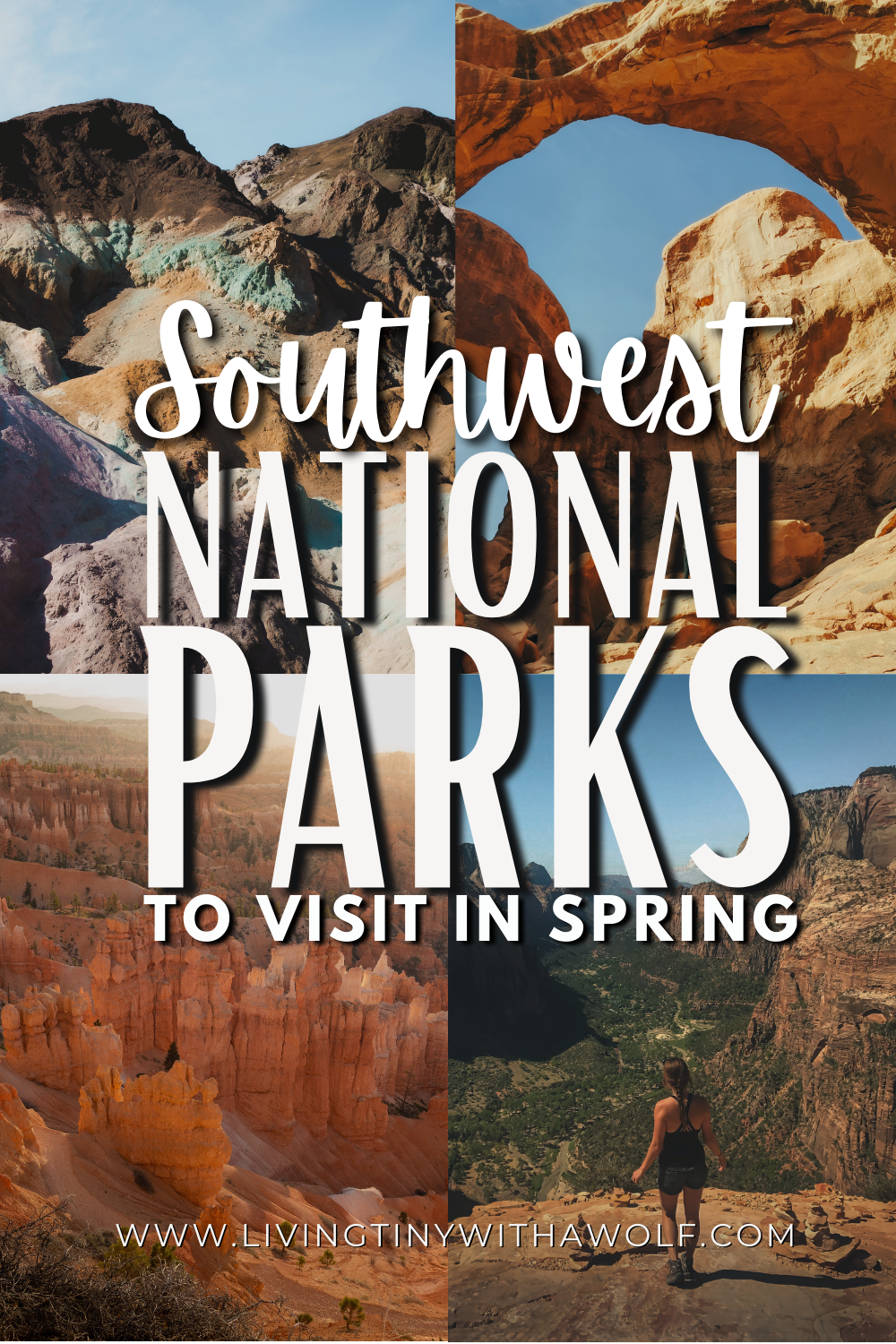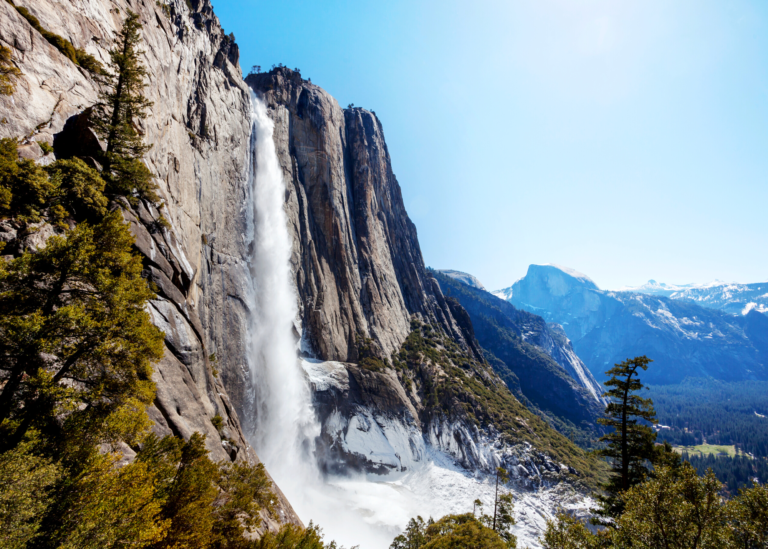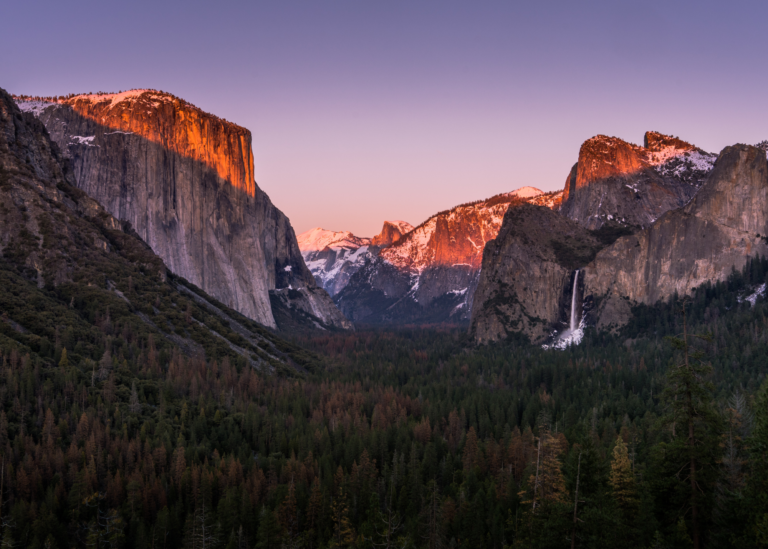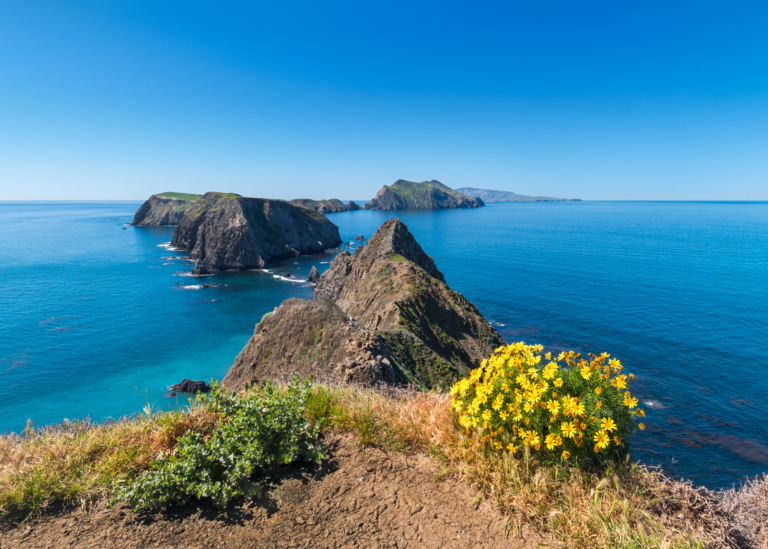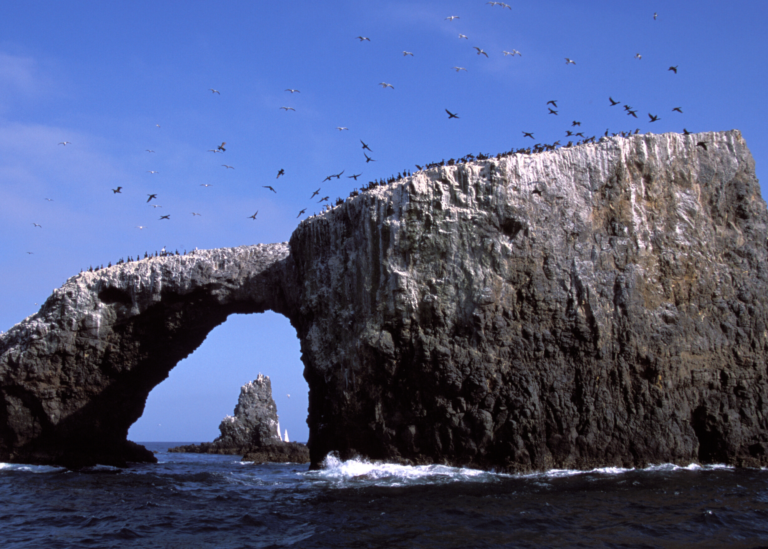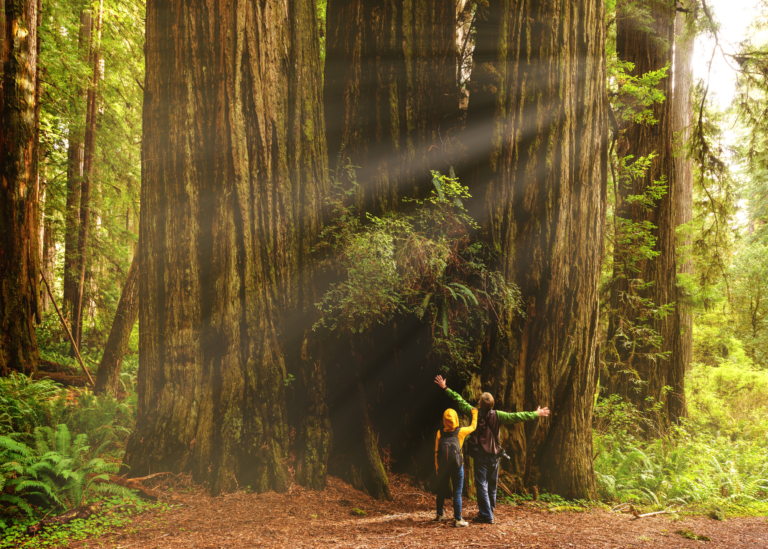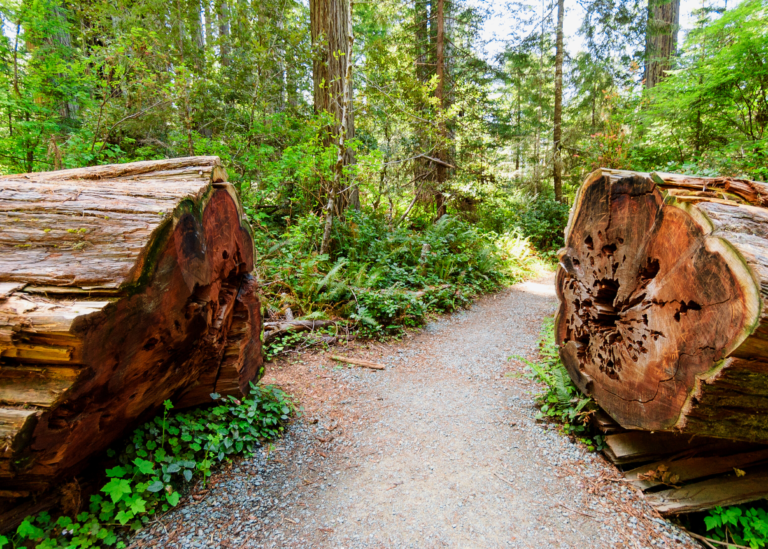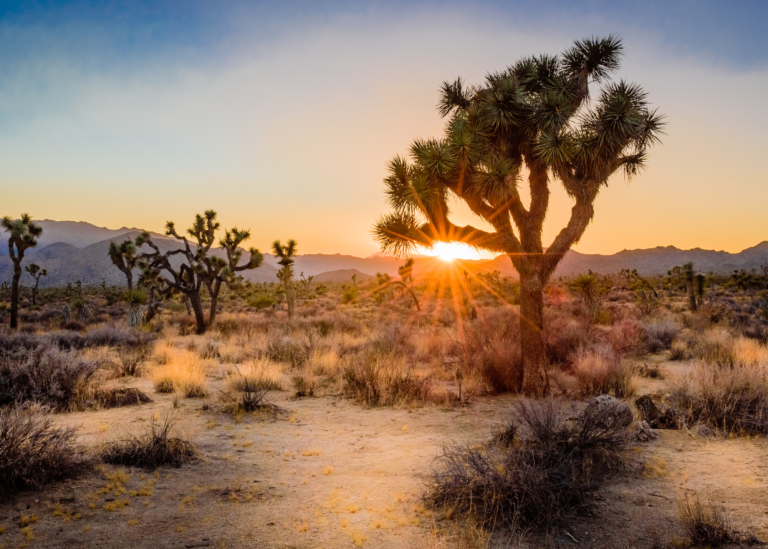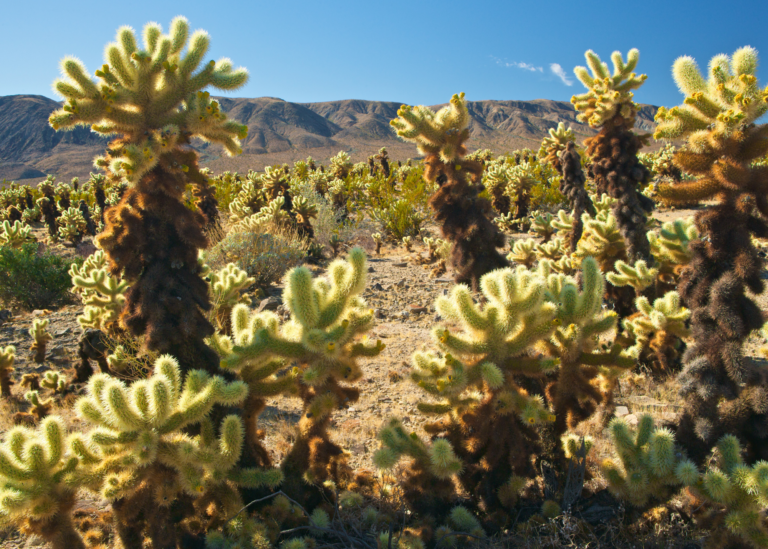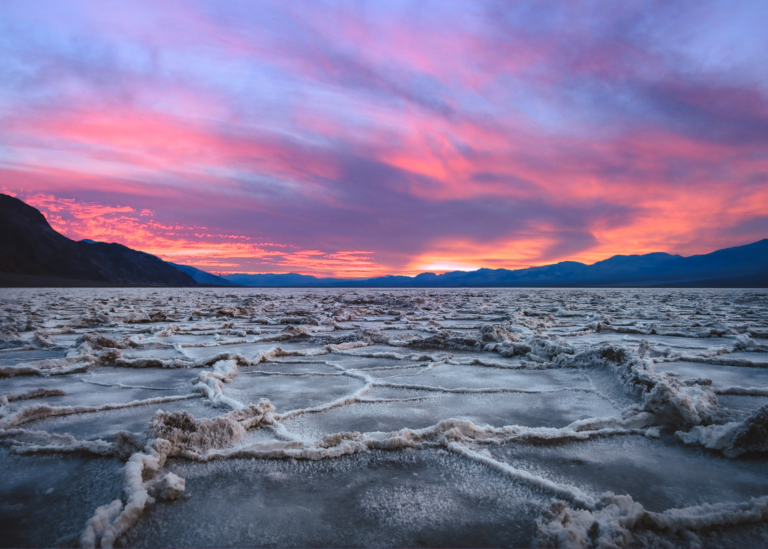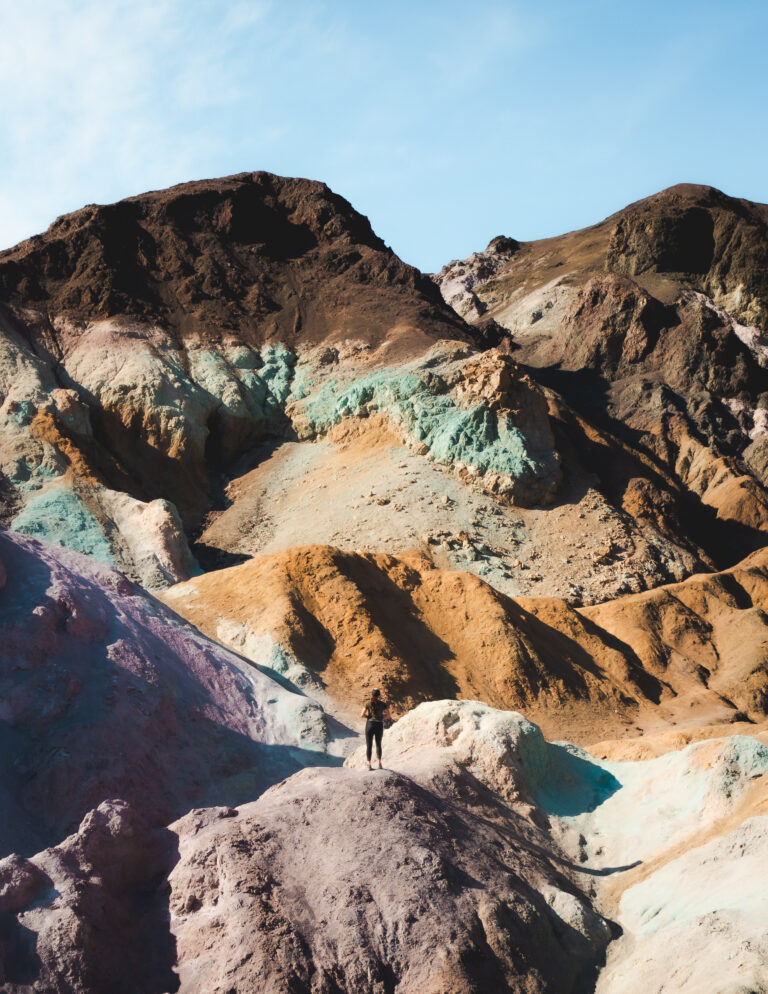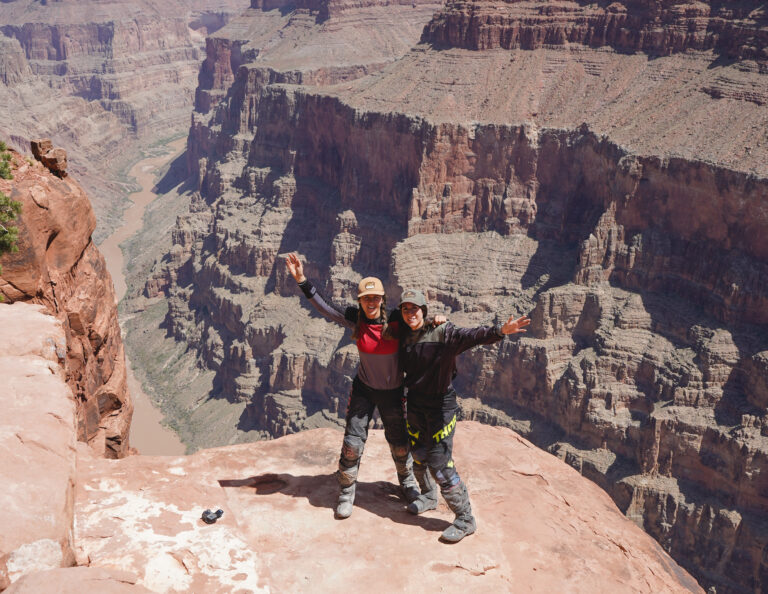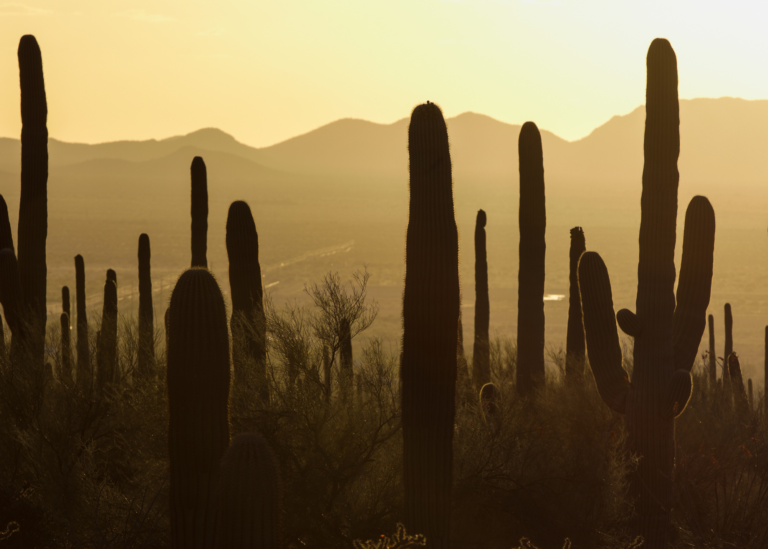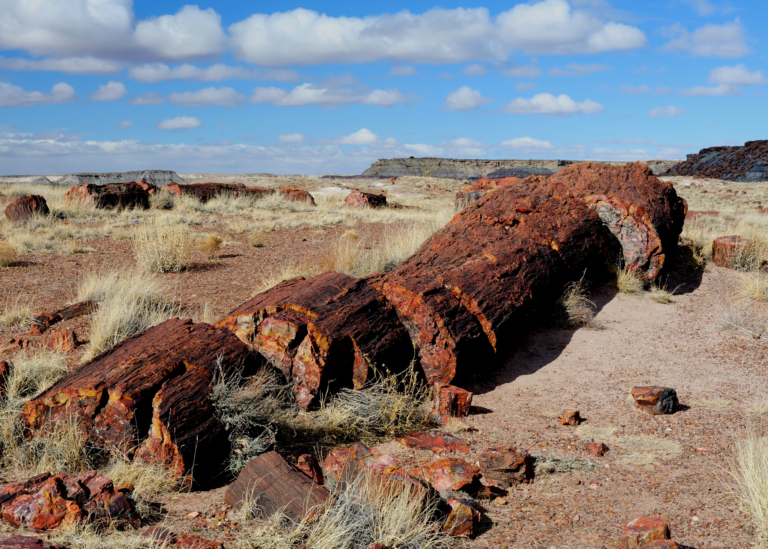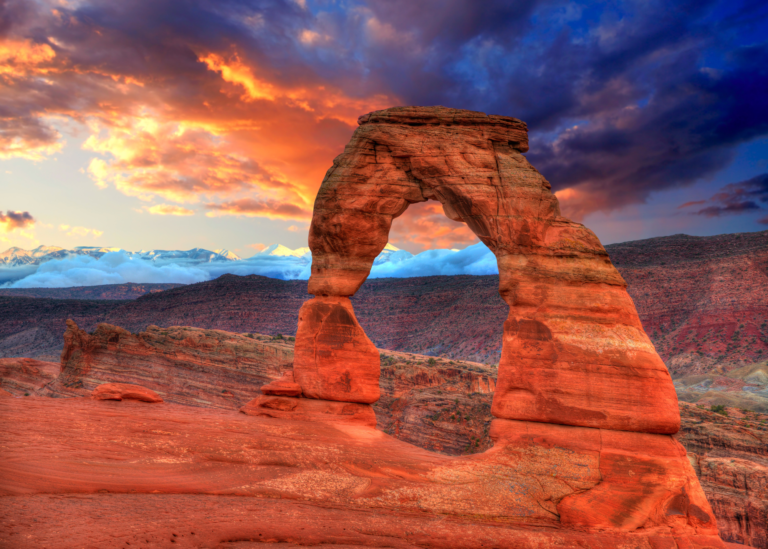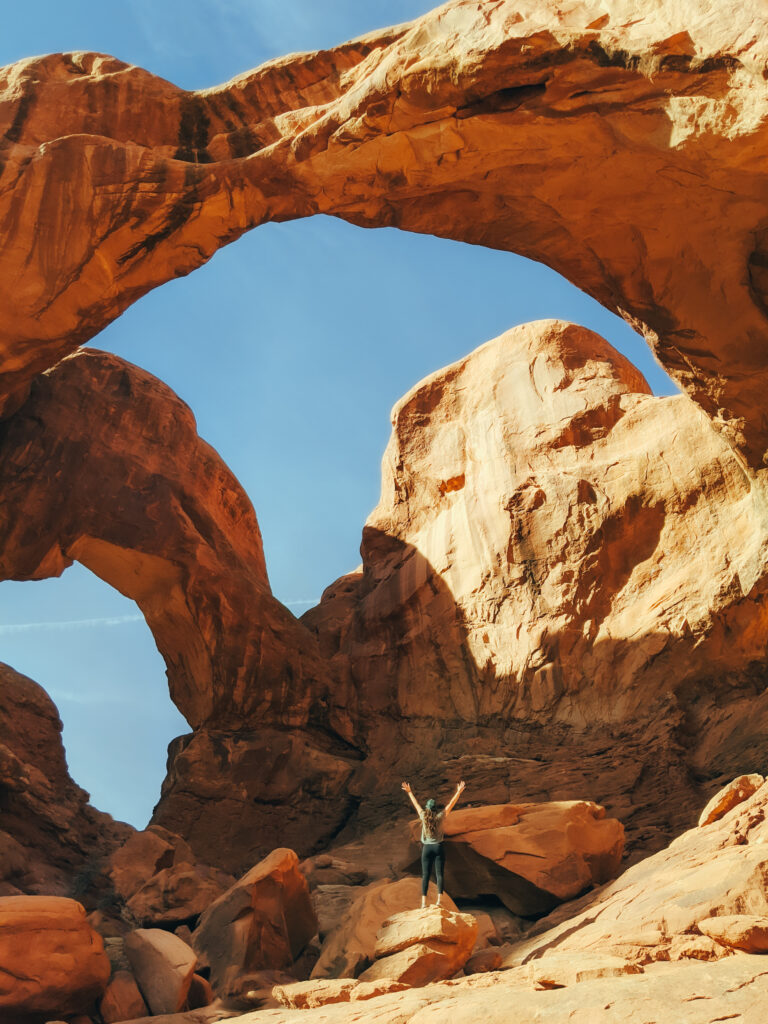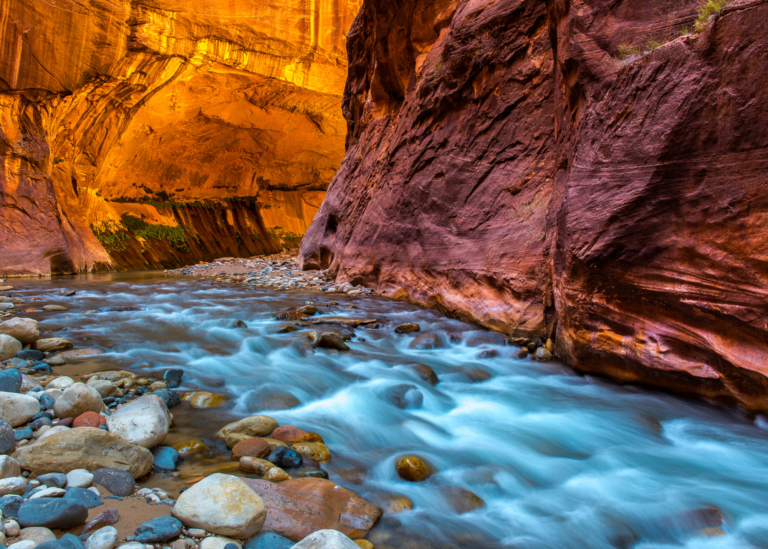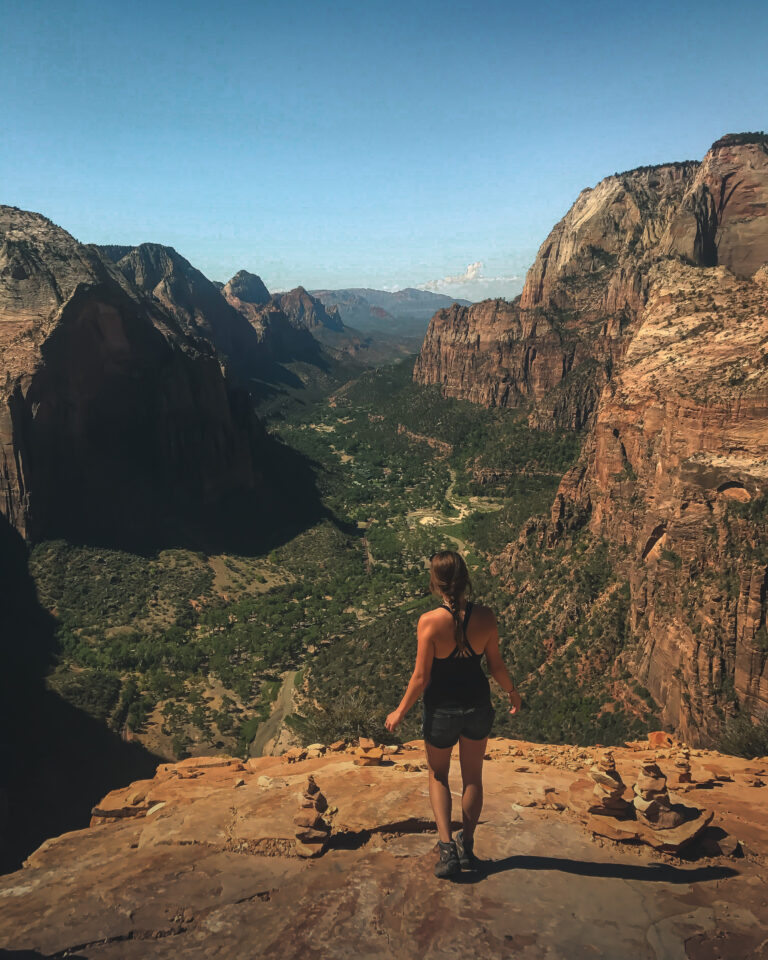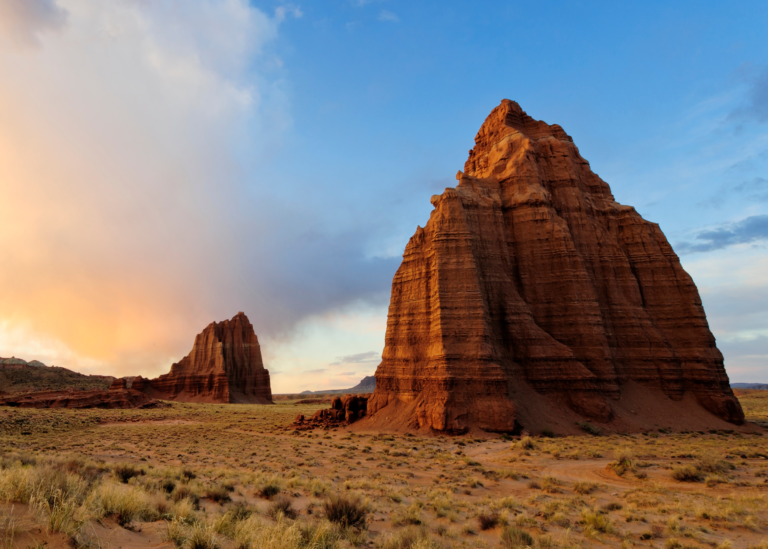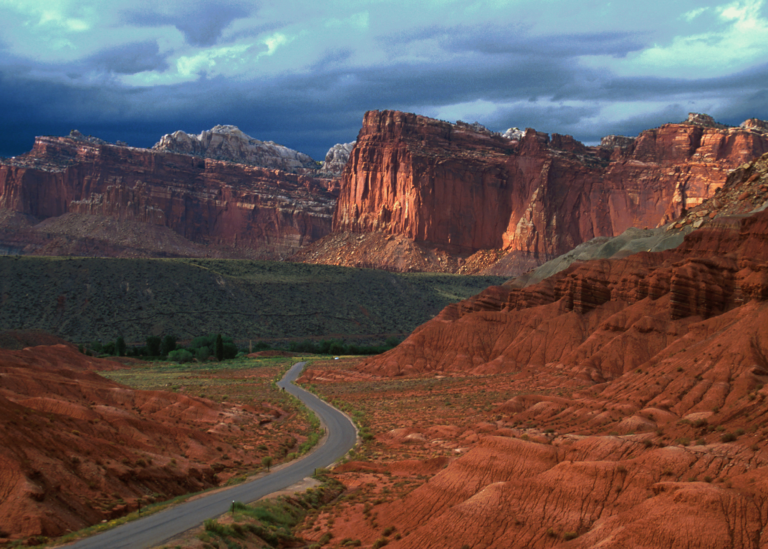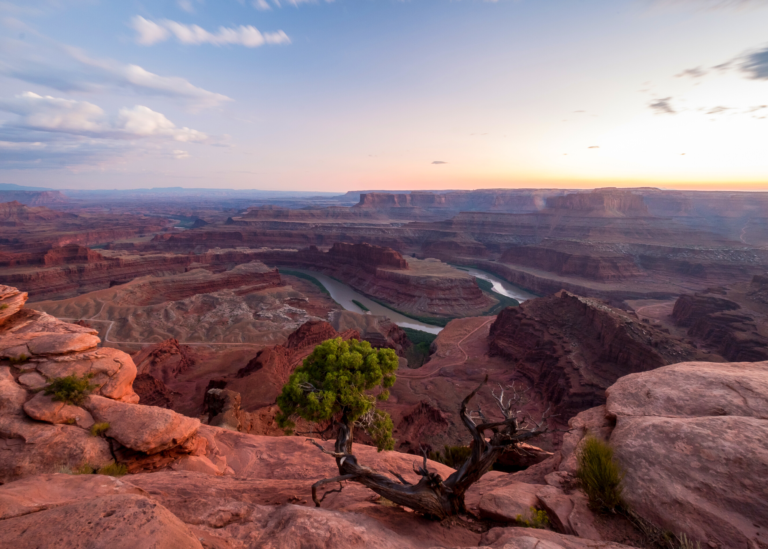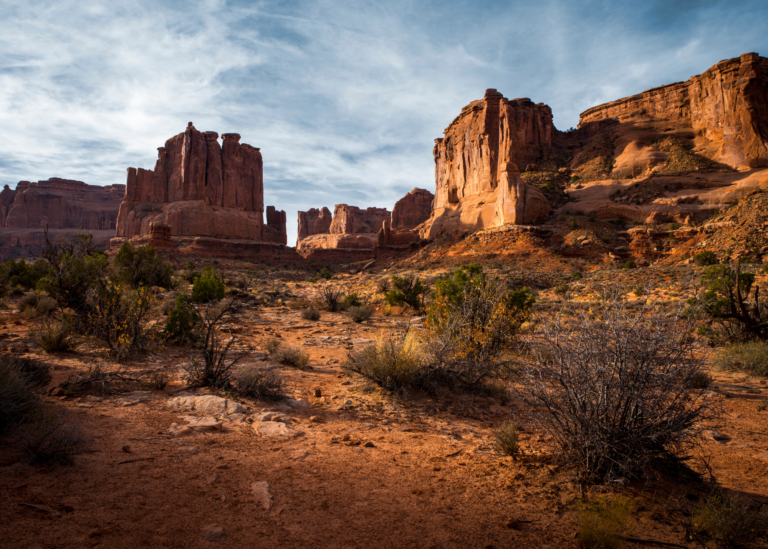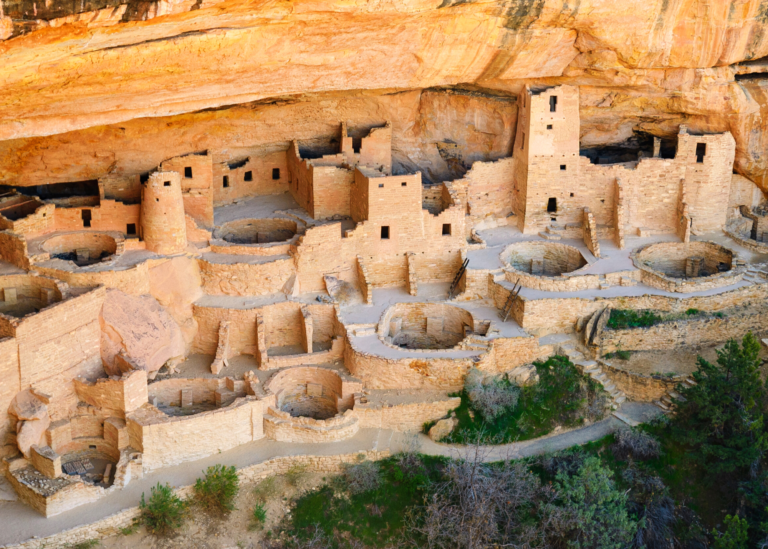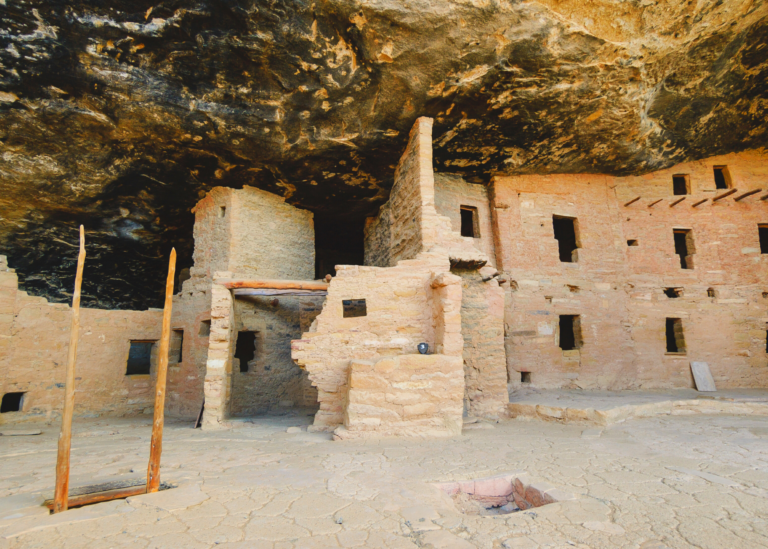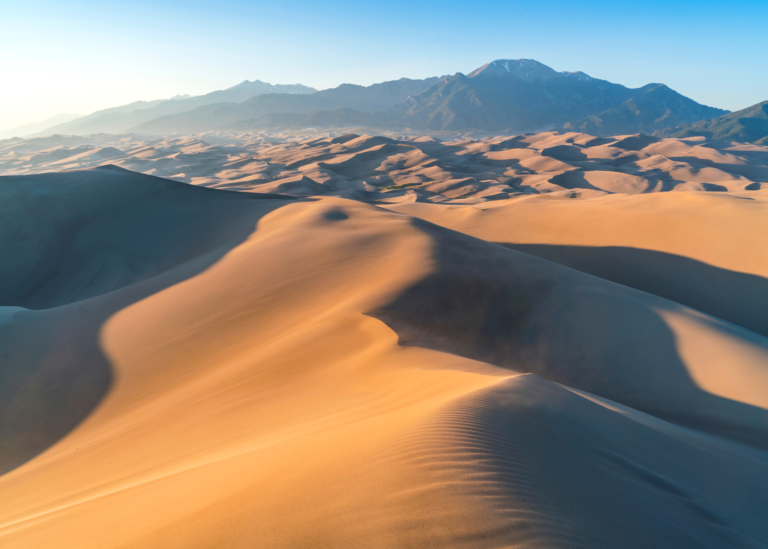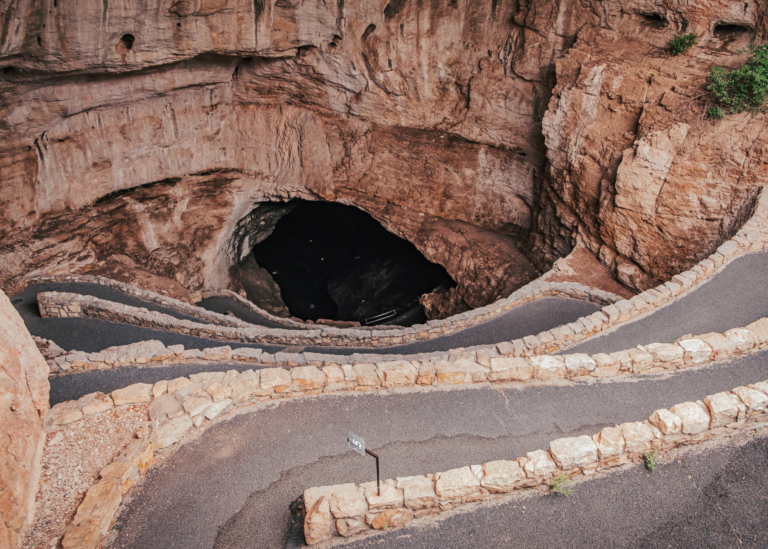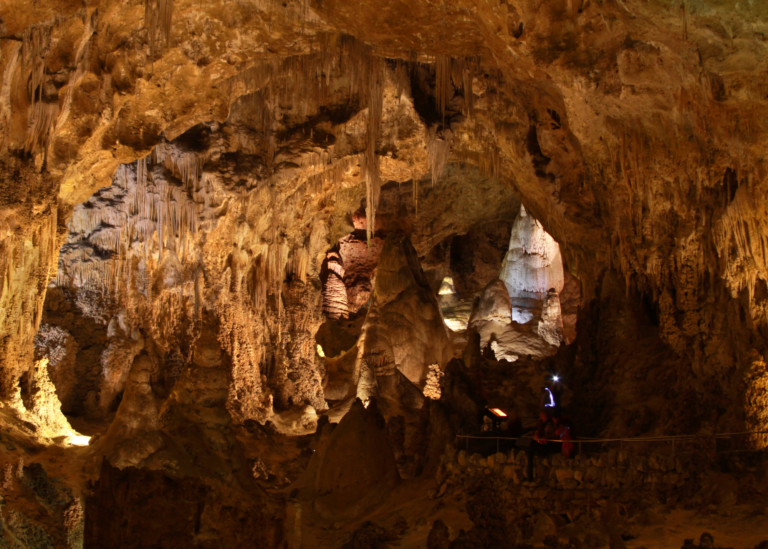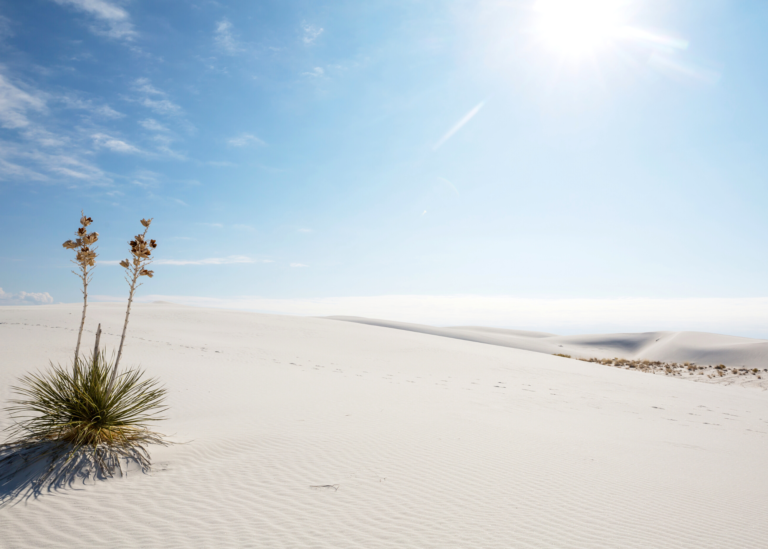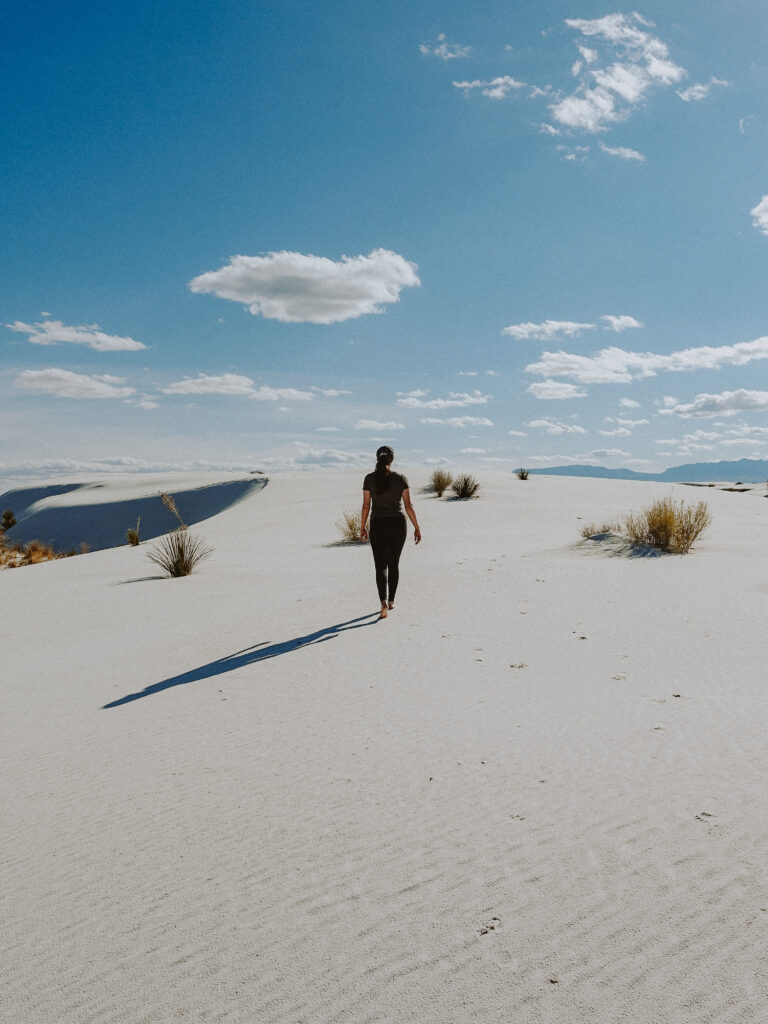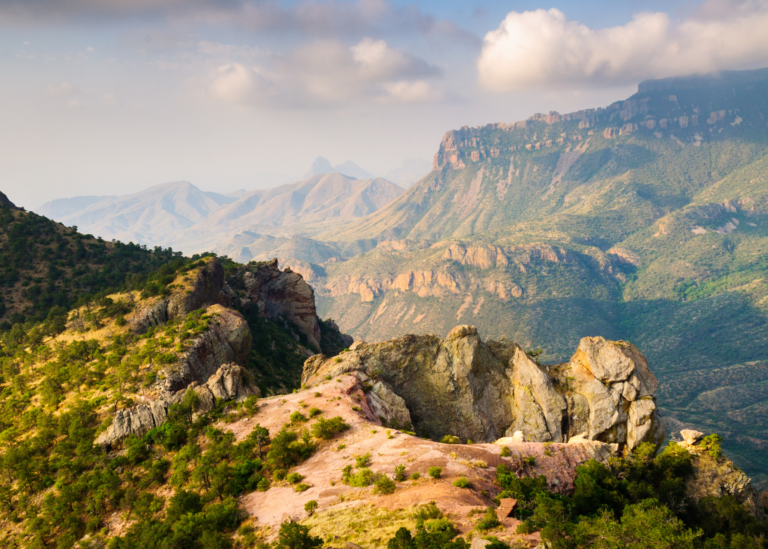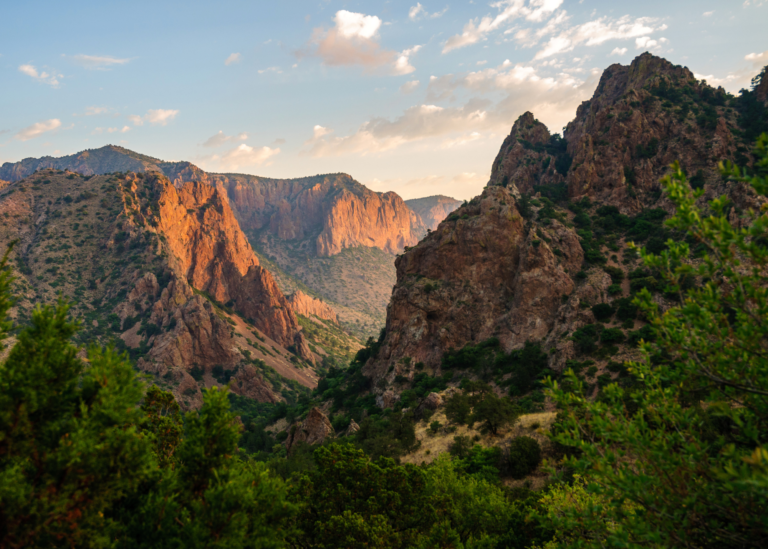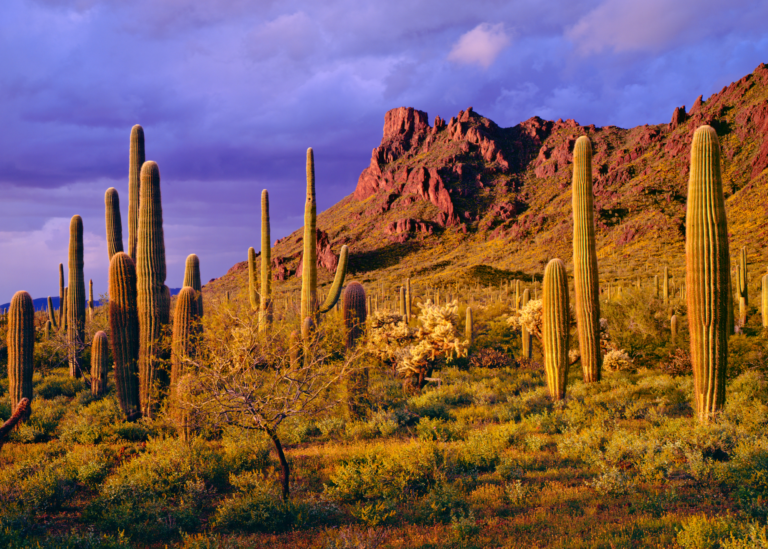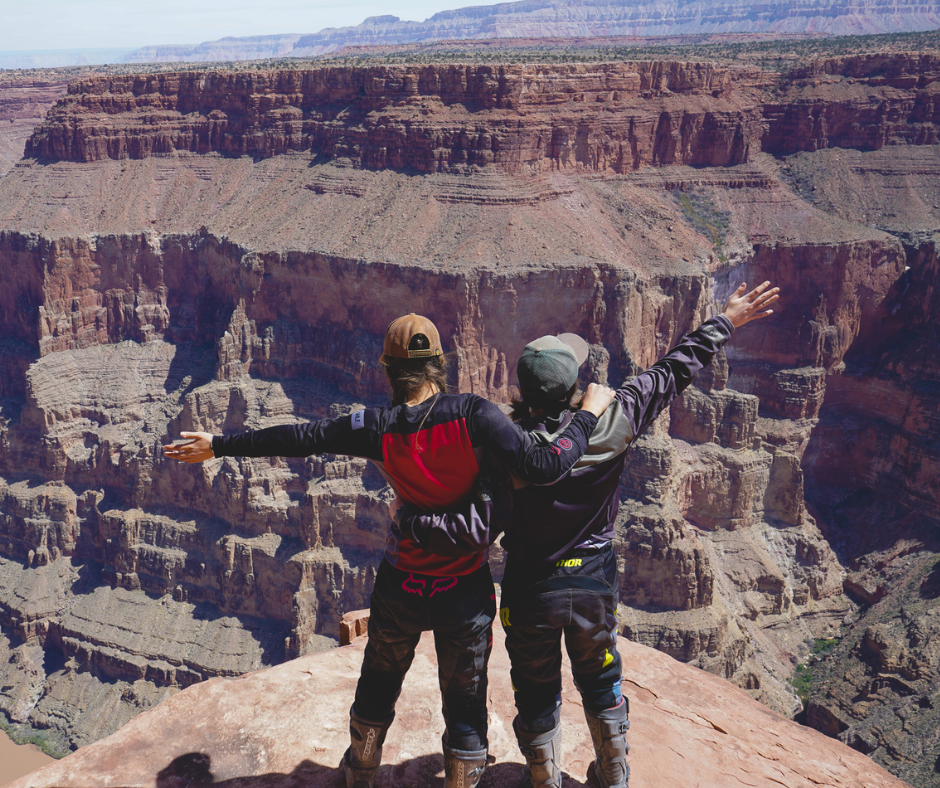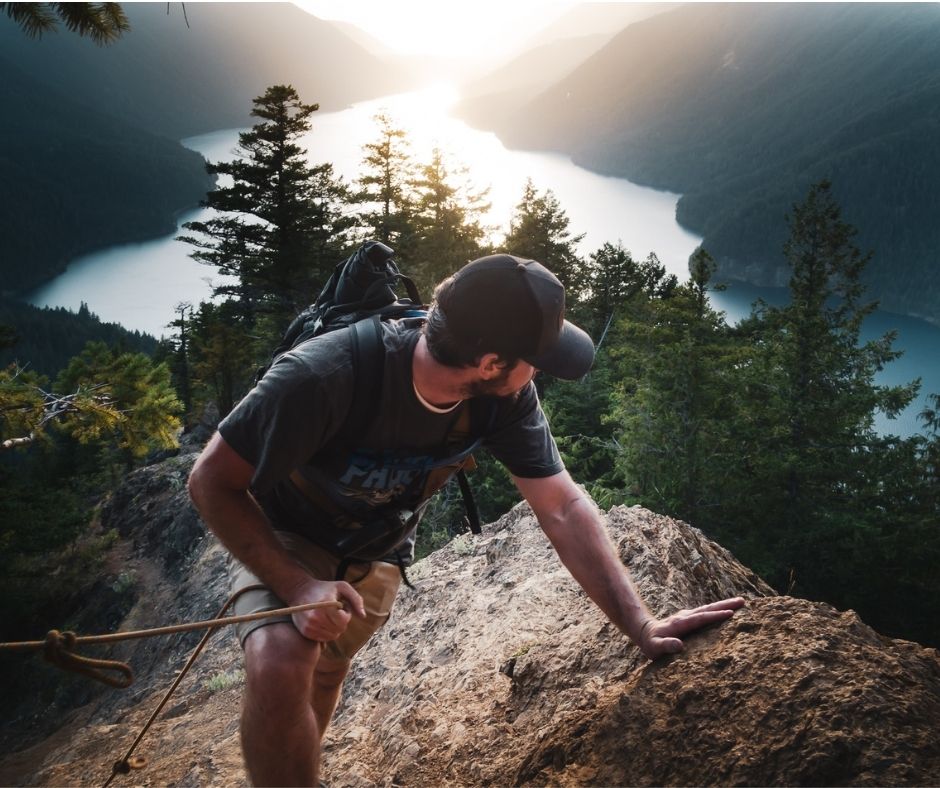20 National Parks in the Southwest US to Visit in the Spring

Table of Contents
ToggleBest US National Parks in the Southwest to Visit in the Spring
Spring has sprung in the southwestern United States, and with it comes the perfect opportunity to explore some of the country’s most breathtaking National Parks.
From towering rock formations to scenic hikes and wildlife sightings, the natural wonders in this region are best experienced during the springtime.
Why, you ask? Well, for one, the scorching temperatures of summer have yet to arrive, meaning you can explore the parks without feeling like you’re roasting in an oven. But that’s not all. Springtime brings with it a burst of color as wildflowers bloom and the landscapes come alive—it’s a magical time of year.
Additionally, spring is typically a shoulder season for many National Parks, meaning that there are fewer crowds and shorter lines. This can make it easier to access popular trails, viewpoints, and other attractions.
Don’t miss your chance to explore the National Parks in Arizona, Southern California, Southern Colorado, New Mexico, Texas, and Utah this spring!
National Parks in the Southwest Map
Know Before you go:
- Free National Park Entrance in April: Mark your calendars and get ready for National Park Week! It is fast approaching, running from April 22 to April 30 this year. And the best part? Entrance fees will be waived on April 22, 2023, giving you the perfect opportunity to explore the beauty of the parks without any cost.
- National Junior Ranger Day: Don’t miss the chance to participate in National Junior Ranger Day, part of National Park Week in April. Bring the little ones along to explore the natural wonders of the parks and earn a coveted Junior Ranger badge.
National Parks in California to Visit in the Spring
1. Yosemite National Park—California
Nestled in the heart of California’s Sierra Nevada mountain range, Yosemite National Park is a must-see destination for anyone who loves the great outdoors.
Covering an area of 1,169 square miles, the park boasts some of the most breathtaking scenery in the world, including soaring granite cliffs, thundering waterfalls, and ancient sequoia trees that have stood for thousands of years.
Reasons to Visit Yosemite in Spring
While Yosemite is a year-round destination, there’s something extra special about visiting in the spring.
As the snow melts, the park comes to life with an explosion of vibrant colors, from the wildflowers that carpet the meadows to the bright green leaves on the trees.
You’ll also have the chance to see Yosemite’s waterfalls at their peak, as the snowmelt feeds the rivers and creates stunning cascades that are truly awe-inspiring.
Best Activities and Attractions
Yosemite has something for everyone, whether you’re an avid hiker, a nature lover, or just looking for a relaxing getaway. Here are some of the best activities and attractions to check out during your springtime visit:
Hiking: Yosemite has over 800 miles of trails, ranging from easy strolls to challenging hikes that take you to some of the park’s most remote and beautiful locations. Some of the most popular hikes in the spring include:
- Half Dome: This 14-16 mile round trip hike is one of Yosemite’s most famous hikes, and for good reason. It’s a challenging and strenuous hike that offers incredible views of the park’s stunning granite cliffs, waterfalls, and valleys. The final ascent up the cables to the top of Half Dome is not for the faint of heart, but the reward is a truly unforgettable view.
- Mist Trail to Vernal and Nevada Falls: This 7-mile round trip hike takes you through some of Yosemite’s most iconic landscapes, including the misty spray of Vernal and Nevada Falls.
Scenic Drives: If you’re looking for a more relaxed way to see the park, take a scenic drive on Tioga Road or Glacier Point Road. You’ll be treated to stunning views of Yosemite’s iconic landmarks, including Half Dome, El Capitan, and Yosemite Falls.
Photography: With its dramatic scenery and ever-changing light, Yosemite is a photographer’s paradise. Spring is a particularly good time to capture the park’s beauty, as the snowmelt creates unique photo opportunities that you won’t find any other time of year.
Yosemite National Park Tours
2. Channel Islands National Park—California
Located off the coast of Southern California, Channel Islands National Park is comprised of five islands and their surrounding waters. This stunning costal park is home to an abundance of marine life and a unique ecosystem that can’t be found anywhere else on the planet.
Reasons Visit Channel Islands National Park in Spring
Spring is the perfect time to explore Channel Islands National Park. The weather is mild, the wildflowers are in bloom, and the wildlife is out in full force. It’s also the start of the park’s busy season, so you’ll have plenty of opportunities to join guided tours and explore the islands with other visitors.
Best Activities and Attractions
There are endless activities to enjoy in Channel Islands National Park, from kayaking and snorkeling to hiking and camping. Here are some of the best activities and attractions to check out during your springtime visit:
Wildlife Watching: One of the biggest draws of Channel Islands National Park is the incredible marine life that calls the surrounding waters home. Visitors can see whales, dolphins, seals, and sea lions, as well as a variety of birds and other animals that live on the islands themselves.
Kayaking: The calm, clear waters around the Channel Islands are perfect for kayaking. Rent a kayak and explore the sea caves and kelp forests that make this area so unique.
Hiking: Each of the five islands has its own network of hiking trails that take you through stunning landscapes and offer breathtaking views of the ocean. Here are some of the best hikes on channel Islands:
- Scorpion Canyon Trail: This 2.5-mile round trip hike takes you through a beautiful canyon filled with native flora and fauna.
- Potato Harbor Trail: This 4.9-mile round trip hike takes you to the stunning Potato Harbor Overlook, offering incredible views of the surrounding islands and coastline.
- Santa Cruz Island: This stunning island offers a variety of hiking trails, including the Cavern Point Loop Trail, the Scorpion/Smuggler’s Loop Trail, and the Santa Cruz Island Trail.
Channel Island National Park Tours
3. Redwood National and State Parks—California
Located on the northern California coast, Redwood National Park is home to some of the tallest trees in the world. These ancient redwoods can reach heights of over 350 feet, and walking among them is an experience you’ll never forget.
Reasons to Visit Redwood National Park in Spring
Spring is the perfect time to visit Redwood National Park. The weather is mild, the crowds are smaller, and the redwood trees are at their most vibrant. The forest floor is covered in wildflowers, and the streams and rivers are flowing with waterfalls.
Best Activities and Attractions
There’s no shortage of things to do and see in Redwood National and State Parks. Here are some of the best activities and attractions to check out during your springtime visit:
Scenic Drives: The park’s scenic drives offer breathtaking views of the redwood forests and the rugged coastline. The Newton B. Drury Scenic Parkway is a must-do, offering a 10-mile drive through some of the most stunning redwood groves in the park.
Hiking: There are over 200 miles of hiking trails in the parks, ranging from easy strolls to challenging hikes. Here are some of the best hikes to consider in Redwood National Park in spring:
- Lady Bird Johnson Grove Trail: This easy 1.3-mile loop trail takes you through a stunning old-growth redwood forest. The trail is named after Lady Bird Johnson, who visited the park in 1968 and played a key role in preserving the park.
- James Irvine Trail: This moderate 4.4-mile trail takes you through the heart of the redwood forest, and offers stunning views of Fern Canyon. The trail is named after James Irvine, who donated the land for the park in the 1920s.
- Damnation Creek Trail: This challenging 5-mile trail takes you through a stunning old-growth redwood forest, and offers stunning views of the Pacific Ocean.
4. Joshua Tree National Park—California
Welcome to the desert oasis that is Joshua Tree National Park. Situated in the southeastern part of California, near the border of Arizona, Joshua Tree covers over 790,000 acres of land, making it one of the largest national parks in the country. This sprawling park boasts a stunning collection of unique rock formations, rugged mountains, and vast desert landscapes.
The Mojave Desert landscape is adorned with the picturesque Joshua trees, which have lent their name to the iconic Joshua Tree National Park. This distinctive name serves as a testament to the park’s abundant population of these spiky, tree-like yuccas that have become synonymous with the region.
Reasons to Visit in the spring
Spring is the perfect time to visit Joshua Tree National Park as temperatures are mild, ranging from the mid-60s to mid-80s Fahrenheit. The wildflowers are in full bloom, painting the desert landscape with vibrant colors and creating a perfect backdrop for hiking.
Best Activities and Attractions
Visitors can take in panoramic views of the Coachella Valley and the San Andreas Fault from Keys View or wander through the unique Cholla Cactus Garden.
The park also features historic landmarks like Barker Dam, which has ancient petroglyphs, and Skull Rock, a popular photo spot. For a unique artistic experience, check out the Noah Purifoy Outdoor Museum featuring sculptures made from found objects.
Hiking: One of the park’s highlights is its extensive network of hiking trails, which stretch for over 100 miles, offering visitors a plethora of opportunities to explore.
- Hidden Valley Trail: A 1-mile loop that takes you through a hidden valley surrounded by towering rock formations.
- Ryan Mountain Trail: A 3-mile round trip hike to the top of Ryan Mountain for panoramic views of the park.
- Lost Horse Mine Trail: A 4-mile round trip hike that takes you to an old mine and offers views of the park’s diverse landscape.
Joshua Tree National Park Tours
5. Death Valley National Park—California/Nevada
Death Valley National Park is one of the most extreme and diverse environments on Earth. Located in Mojave Desert in California, this park is a true wonderland of unique geological features, stunning landscapes, and fascinating history.
It’s a land of extremes, with the park being approximately 3,373 square miles, it is one of the largest national parks in the United States with some of the hottest temperatures ever recorded on the planet. The highest recorded temperature in the park was 134 degrees Fahrenheit.
Reasons to visit Death Valley in the Spring
Spring is an excellent time to visit Death Valley National Park, as the temperatures are much milder than in the summer, and the park is beaming with life.
During the spring, the wildflowers bloom in a kaleidoscope of colors, transforming the desert into a vibrant garden, making it a great time to explore the deep canyons, towering mountains, and vast salt flats.
Best Activities and Attractions
Death Valley National Park is a breathtaking desert landscape with many unforgettable attractions. Visitors can marvel at:
- Badwater Basin: This is the lowest point in North America, and it features a vast expanse of salt flats. Visitors can walk out onto the salt flats and take in the unique landscape.
- Zabriskie Point: A stunning viewpoint that offers a panoramic view of the surrounding badlands and rock formations. It’s a popular spot for sunrise and sunset photography.
- Dante’s View: Another stunning viewpoint that overlooks the salt flats and surrounding mountains. It’s a great spot for stargazing at night.
- Mesquite Flat Sand Dunes: A beautiful expanse of sand dunes that can reach up to 100 feet high.
- Artist’s Drive: A scenic drive that winds through a narrow canyon and offers views of colorful rock formations and hillsides (pictured above).
- Ubehebe Crater: A massive volcanic crater that was formed thousands of years ago. Visitors can hike around the rim of the crater and take in the unique geology of the area.
The park is also home to several historic sites, such as the Harmony Borax Works, a 19th-century borax mining operation, and the ghost town of Rhyolite, which was once a bustling gold mining town.
If you are looking for more things to do the southwest US in the spring, Valley of Fire State Park is also a stunning place to visit this time of year and it is not too far from Death Valley.
Death Valley National Park Tours
National Parks in Arizona to Visit in the Spring
6. Grand Canyon National Park—Arizona
The Grand Canyon is a natural wonder that attracts millions of visitors each year. Located in northern Arizona, the Grand Canyon covers over 1.2 million acres of land.
The star attraction is, of course, the Grand Canyon itself, which is over 277 miles long, up to 18 miles wide, and over a mile deep. The sheer size and scale of the canyon is something that must be seen to be believed.
Reasons to Visit the Grand Canyon in the Spring
While the park is open year-round, spring is an excellent time to visit. During this season, temperatures are generally mild and comfortable with daytime temperatures ranging from the high 40s to mid-60s Fahrenheit. However, it’s worth mentioning that temperatures at the rim of the canyon can still be chilly in the early morning and at night.
The warmer weather also brings beautiful wildflowers and blooming cacti to the canyon, adding to the already breathtaking scenery.
The crowds at the park are also generally lower in the spring compared to the peak summer months, allowing visitors to enjoy a more peaceful and relaxed experience.
Best Activities and Attractions
Hiking: The Grand Canyon is a hiker’s paradise, with trails ranging from easy walks along the rim to challenging backcountry treks. Some of the most popular hikes include:
- Bright Angel Trail: This is a classic Grand Canyon hike that is around 12 miles round trip if you hike to the Colorado River and back.
- South Kaibab Trail: The trailhead is located near Yaki Point, and the trail offers incredible views of the canyon and rock formations. Hikers can choose to hike as far as Ooh-Aah Point, which is around 1.5 miles round trip, or hike all the way to Skeleton Point, which is a 6 mile round trip.
Scenic drives: If hiking isn’t your thing, there are plenty of scenic drives in the park that offer stunning views of the canyon. The most popular drives include Desert View Drive and Hermit Road. You can also drive to the lesser known point on the North Rim of the Grand Canyon called Toroweap Point.
Rafting: For a more adventurous experience, consider a white water rafting trip down the Colorado River. These trips range from one day to several weeks and provide a unique perspective on the canyon.
Helicopter tours: If you want a bird’s eye view of the canyon, a helicopter tour is a great option. These tours offer panoramic views of the canyon and surrounding landscape.
Mule rides: For a unique way to explore the canyon, consider a mule ride down into the canyon. These rides are led by experienced wranglers and provide a memorable and historic experience.
Recommended Grand Canyon Tours
7. Saguaro National Park—Arizona
Welcome to the land of giant cacti and stunning desert landscapes— welcome to Saguaro National Park! Located in southern Arizona, this park is a true desert wonderland. With over 91,000 acres of pristine Sonoran Desert, it’s a landscape that’s both rugged and beautiful.
Reasons to visit Saguaro National Park in Spring
Spring is the perfect time to visit Saguaro National Park because the cacti are in bloom! That’s right, the saguaro cacti, which can live up to 200 years old, produce beautiful white flowers in the springtime. Plus, the temperatures are mild, making it a comfortable time to explore the park without getting too hot or too cold.
Best Activities and Attractions
Ready to explore the desert? Saguaro National Park offers plenty of activities that will take you through some of the most stunning desert landscapes in the park.
Take a scenic drive and enjoy breathtaking views of the saguaro forests and rocky peaks. Or, take a hike and explore the trails that wind through the cactus forests and offer stunning vistas of the Sonoran Desert. Some of the best hikes include:
- Cactus Forest Trail: This 2.5-mile loop trail takes you through the heart of the park’s stunning saguaro forest.
- King Canyon Trail: This 4-mile round-trip hike takes you through a stunning canyon filled with towering saguaro cacti.
- Sendero Esperanza Trail: This moderate 4.4-mile hike takes you through a diverse desert landscape, offering stunning views of the Tucson Mountains and the surrounding desert.
Recommended Tours
8. Petrified Forest National Park—Arizona
Petrified Forest National Park in Northeast Arizona is a geological wonderland that will transport you back in time. Here, you’ll find a stunning collection of petrified logs that date back over 200 million years, as well as a diverse array of plant and animal life, ancient petroglyphs, and much more.
Reasons to Visit Petrified Forest in the Spring
Spring is an excellent time to visit Petrified Forest National Park, as the temperatures are mild, and the crowds are fewer. It’s the perfect time to explore the park’s hiking trails, take a guided tour, or simply marvel at the stunning landscapes. Plus, the wildflowers are in bloom during the spring, providing a colorful backdrop to the petrified logs.
Best Activities and Attractions
Get ready to step back in time and explore the incredible landscapes of Petrified Forest National Park. Some of the main attractions in the park include:
- The Painted Desert: A vast and multi-colored badlands landscape that spans 160 miles.
- Petrified Forest: The park is home to some of the largest and most beautiful petrified wood specimens in the world. The wood has been preserved for millions of years and transformed into colorful, crystalline structures.
- Blue Mesa: This striking landscape is composed of blue-gray bentonite clay and features scenic hiking trails that allow visitors to explore the area.
- Newspaper Rock: A large petroglyph site that features over 650 individual designs, including human figures, animals, and geometric shapes.
- Agate Bridge: A 110-foot-long petrified log that spans a natural ravine. Visitors can walk across the bridge and marvel at its beauty.
- Crystal Forest: A collection of colorful petrified wood pieces that have been exposed by erosion. Visitors can view the wood up close and learn about the unique geological processes that created it.
- Route 66: The park is located along the famous Route 66, and visitors can see historic landmarks and memorabilia of the old highway that once crossed the park.
Recommended Tour
National Parks in Utah to Visit in the Spring
10. Arches National Park—Utah
Arches National Park is a natural wonderland situated in the heart of Utah’s red rock country, just a short drive from Moab. With over 2,000 sandstone arches and numerous unique geological formations, this park is an absolute must-visit for nature enthusiasts and adventurers looking for an unforgettable experience in the spring.
Reasons to Visit Arches in the Spring
Spring is a great time to visit Arches National Park for a variety of reasons. One of the main reasons is the weather—temperatures during the spring months (March through May) are typically mild, with highs in the 60s and 70s Fahrenheit. This makes for ideal hiking conditions.
Another reason to visit Arches National Park in the spring is the wildflowers. The park is home to a variety of wildflowers, which typically bloom in late March through early May. Seeing the park’s stunning red rock formations juxtaposed with a sea of colorful wildflowers is truly amazing.
Best Activities and Attractions
Scenic drive: The 18-mile paved road winds through stunning landscapes of sandstone arches, towers, and iconic landmarks, including Balanced Rock, the Windows Section, and Park Avenue. The drive typically takes 2-3 hours, depending on how many stops you make along the way.
Hiking: is one of the most popular activities, with over 50 miles of trails to explore. Be sure to check out these popular trails:
- Double Arch: This short hike take you to one of the most impressive and unique rock formations in Arches National Park, located in southeastern Utah, USA. It is a giant arch formed by two massive sandstone spans that rise 112 feet above the ground and stretch 144 feet across, making it one of the largest arches in the park.
- Delicate Arch Trail: This moderate 3-mile round trip trail takes you to the iconic Delicate Arch, one of the most recognizable landmarks in the park. The trail is fairly steep in some places, and can be hot in the summer, so be sure to bring plenty of water and sunscreen.
- Devils Garden Trail: This moderate 7.2-mile round trip trail takes you through a stunning landscape of arches, sandstone fins, and other unique rock formations. Along the way, you can see famous landmarks like Landscape Arch and Double O Arch.
Recommended Tours in Arches
11. Zion National Park—Utah
Zion National Park is one of the most popular and breathtaking national parks in the United States.
Located in southern Utah, the park covers an area of over 230 square miles and is known for its towering sandstone cliffs, narrow slot canyons, and vibrant red rock formations.
These unique geological features have been formed over millions of years through the forces of erosion and tectonic uplift.
Reasons to Visit Zion National Park in the Spring
Springtime temperatures in Zion National Park range from the mid-60s to mid-70s (Fahrenheit), making it the perfect time to explore the park’s many hiking trails and outdoor activities without the extreme heat of the summer.
Additionally, springtime snowmelt in the park’s high elevations can lead to impressive waterfalls cascading down the cliffs and canyons, making for some truly breathtaking sights.
And finally, springtime crowds in Zion National Park are generally lower than the peak summer season, making it a great time to explore the park’s popular destinations without the crowds.
Best Activities and Attractions
Hiking: The park has over 90 miles of trails that lead to some of the park’s most iconic locations, such as:
- Angels Landing: A strenuous 5-mile round trip hike with a steep climb and dizzying drop-offs, but with breathtaking views of the park from the top (pictured above).
- The Narrows: A unique 16-mile hike through a river with towering walls that narrow to just 20 feet wide in some places.
- Emerald Pools: A 3-mile round-trip hike that takes you to a series of beautiful pools and waterfalls.
Scenic drive: For a more relaxed way to experience the park’s natural beauty, take a scenic drive along the Zion Canyon Scenic Drive or the Kolob Canyons Road. These drives offer breathtaking views of the park’s towering cliffs and vibrant rock formations.
Recommended Tours Near Zion
12. Capitol Reef National Park—Utah
Located in south-central Utah, Capitol Reef National Park is situated in the heart of the Colorado Plateau and covers an area of over 240,000 acres of colorful canyons, towering rock formations, and ancient petroglyphs. It’s a landscape that’s both awe-inspiring and fascinating.
Reasons to Visit Capitol Reef in the Spring
Spring is the perfect time to visit Capitol Reef National Park because the temperatures are mild and the crowds are fewer. That means you can explore the park’s stunning landscapes without having to worry about overheating or waiting in long lines. Plus, the park’s fruit orchards are in bloom during the spring, providing a sweet treat for visitors to enjoy.
Best Activities and Attractions
Ready to explore the red rock country? Capitol Reef National Park offers plenty of activities that will take you through some of the most stunning landscapes in the park.
Scenic drive: Take a scenic drive and enjoy breathtaking views of the Waterpocket Fold, a 100-mile long geological monocline that runs through the park.
Hiking: Take a hike and explore the trails that wind through the canyons and offer stunning vistas of the red rock formations. Here are some of the best hikes to consider when exploring this beautiful park:
- Capitol Gorge Trail: a 2-mile round-trip hike that takes you through a narrow canyon with petroglyphs, old homesteads, and stunning rock formations.
- Hickman Bridge Trail: a 2-mile round-trip hike that takes you to a natural bridge spanning 133 feet and offering great views of the surrounding landscape.
- Cassidy Arch Trail: a 3.4-mile round-trip hike that takes you to a natural arch named after the infamous outlaw, Butch Cassidy.
The park is also home to a rich history, including ancient petroglyphs, pioneer homesteads, and orchards that date back to the 1800s.
13. Canyonlands National Park—Utah
Canyonlands National Park is the land of endless canyons and breathtaking vistas. Located in southeastern Utah, this park is a true gem of the American Southwest. With over 337,598 acres of stunning canyons, towering mesas, and winding rivers, it’s a landscape that’s both rugged and beautiful.
Reasons to visit Canyonlands in the spring
Spring is the perfect time to visit Canyonlands National Park because the weather is mild and the crowds are thin. With average temperatures ranging from the 50s to 70s Fahrenheit, it’s the perfect time to explore the park. Plus, the wildflowers are in bloom, adding a pop of color to the already stunning landscape.
Best Activities and Attractions
Hiking: Ready to explore the canyons? Canyonlands National Park offers plenty of hiking trails that will take you through some of the most stunning landscapes in the park:
- Mesa Arch Trail: a 0.5-mile round-trip hike that takes you to an iconic arch with stunning views of the surrounding canyons.
- Grand View Point Trail: a 2-mile round-trip hike that offers panoramic views of the canyonlands from an elevated viewpoint.
- Murphy Point Trail: a 3.6-mile round-trip hike that takes you through a scenic canyon and offers views of the La Sal Mountains.
- Upheaval Dome Trail: a 1.8-mile round-trip hike that takes you to a unique geologic feature with an uncertain origin.
Scenic Drive: Explore the breathtaking beauty of Canyonlands National Park with these must-see attractions along a scenic drive:
- Island in the Sky: This scenic drive takes you to several overlooks with stunning views of the canyons, including Grand View Point and Mesa Arch.
- Shafer Canyon Road: This steep and winding road takes you through a canyon with stunning views of the surrounding landscape.
- Needles District: This remote section of the park offers unique rock formations and challenging hiking opportunities.
- Dead Horse Point State Park: Although not technically part of the park, this state park is located just outside of Canyonlands and offers stunning views of canyonlands and the Colorado River.
Recommended Tours of Canyonlands
14. Bryce Canyon National Park—Utah
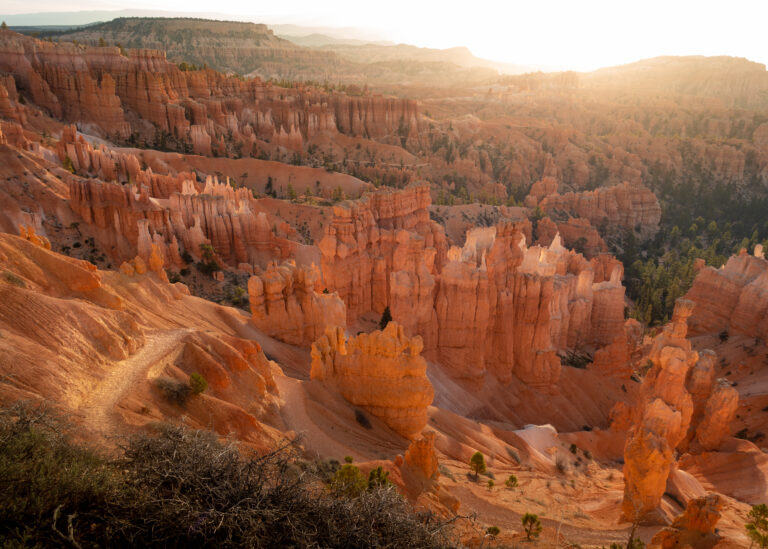
Located in southern Utah, Bryce Canyon National Park is a geological wonderland. With hoodoos of orange, pink, and red rock formations rising from the ground like castles and spires, casting dramatic shadows across the canyon floor, you’ll feel like you’ve been transported to another world.
Reasons to Visit Bryce Canyon in the Spring
Bryce Canyon National Park is a spectacular destination to visit in the spring season. The pleasant weather, with average temperatures around 50-60°F, makes it a perfect time to explore the park’s beautiful trails, campgrounds, and scenic overlooks.
Spring is also a quieter season in the park, with fewer crowds, making it an ideal time to enjoy the natural beauty and tranquility of the park.
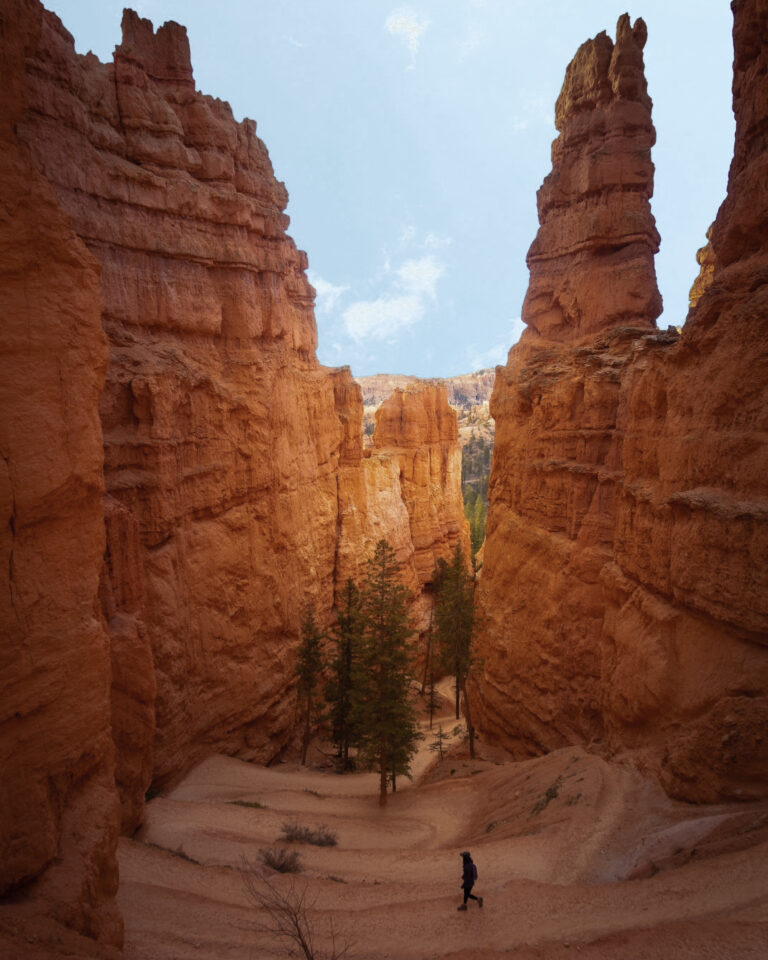
Best Activities and Attractions
Hiking: Bryce Canyon offers a variety of hiking trails for all levels of experience, from easy walks along the rim to more challenging treks into the canyon including:
- Navajo Loop Trail: This popular 1.3-mile loop takes hikers through the heart of the Bryce Amphitheater, offering stunning views of towering hoodoos and natural arches. The trail is moderate to strenuous, with steep switchbacks and a 550-foot elevation gain.
- Queens Garden Trail: The Queens Garden Trail is a 1.8-mile roundtrip hike that takes hikers down into the canyon, offering breathtaking views of hoodoos and rock formations along the way. The trail is rated as moderate and offers a unique opportunity to explore the canyon floor.
Sunrise and Sunset Viewing: The hoodoos and rock formations of Bryce Canyon look especially beautiful during sunrise and sunset, when the light casts dramatic shadows across the landscape. Visitors can enjoy breathtaking views from various overlooks throughout the park.
Horseback Riding: Horseback riding is a unique way to explore Bryce Canyon, offering a slower pace that allows you to take in the scenery at a leisurely pace. Several companies offer guided horseback tours of the park.
If you are going to be in the area awhile, check out some of the most stunning things to do in Kanab, Utah.
Recommended Bryce Canyon Tours
National Parks in Colorado to Visit in the Spring
15. Mesa Verde National Park—Colorado
Mesa Verde National Park is a treasure trove of history and culture located in the southwestern United States. This park is home to an impressive collection of archaeological sites that tell the story of the Ancestral Pueblo people who lived in the area over 1,000 years ago.
Reasons to visit Mesa Verde in the Spring
The weather is typically mild and comfortable in this southern region of Colorado, making it easier to explore the park’s many outdoor attractions.
Spring is also a great time to beat the crowds, as the park is not yet as busy as it can be during peak tourist season.
Best Activities and Attractions
Mesa Verde National Park has a wealth of attractions, tours, and hikes that showcase the rich history and natural beauty of the area. Here are some of the best ones:
- Cliff Palace: The largest cliff dwelling in North America, Cliff Palace is a must-see attraction. Visitors can take a guided tour of the dwelling and learn about the daily life of the Ancestral Pueblo people who inhabited it.
- Spruce Tree House: One of the best-preserved cliff dwellings in the park, Spruce Tree House offers a glimpse into the architecture and daily life of the Ancestral Pueblo people.
- Chapin Mesa Archaeological Museum: This museum offers a comprehensive overview of the park’s history and culture, with exhibits that showcase Ancestral Pueblo artifacts, tools, and pottery.
Hikes:
- Petroglyph Point Trail: This moderate 2.4-mile hike takes visitors through a canyon to a rock shelter that features a collection of Ancestral Pueblo petroglyphs.
- Knife Edge Trail: This challenging 2.2-mile hike offers stunning views of the park’s canyons and cliff dwellings. The trail follows a narrow ridge that requires some scrambling.
- Prater Ridge Trail: This moderate 4.2-mile hike takes visitors to the top of Prater Ridge, where they can see panoramic views of the park and surrounding mountains.
You can also explore the best attractions in Durango Colorado when visiting Mesa Verde this spring.
Recommended Mesa Verde Tours
16. Great Sand Dunes National Park—Colorado
In the southwest region of Colorado, lies a vast land of giant sand dunes of epic proportions, also known as Great Sand Dunes National Park.
Encompassing approximately 149,137 acres of land, this colossal sandbox is comprised of tundra, forests, wetlands, and some of the highest sand dunes in North America, towering up to 750 feet tall!
Reasons to Visit Great Sand Dunes in the Spring
Spring is a great time to visit Great Sand Dunes National Park because the weather is perfect for hiking and exploring, with average temperatures ranging from the 50s to 70s Fahrenheit.
Plus, the snowmelt from the nearby mountains creates a shallow river that runs along the base of the dunes, creating a refreshing oasis to cool off in after a day of hiking.
Best Activities and Attractions
Ready to tackle the dunes? Great Sand Dunes National Park offers plenty of hiking trails that will take you to the top of the dunes. But if you’re feeling adventurous, why not try sandboarding down the dunes? It’s like snowboarding, but with sand!
But there’s more to Great Sand Dunes National Park than just sand. The park is also home to Medano Creek, a shallow stream that runs along the base of the dunes. It’s the perfect spot to cool off on a hot day and enjoy a picnic with family and friends.
Finally, don’t miss an opportunity to soak at the nearby Hooper Hot Springs Sand Dunes Pool at the base of the Sangre de Cristo mountains.
National Parks in New Mexico to Visit in the Spring
17. Carlsbad Caverns National Park—New Mexico
Explore the subterranean world of Carlsbad Caverns National Park, located in the southeastern region of New Mexico, near the Guadalupe Mountains.
The park features an impressive collection of over 119 caves, showcasing a mysterious and captivating landscape for visitors to discover.
Admire the stunning stalagmite rock formations, unique speleothems, and underground rivers that make Carlsbad Caverns so unique.
Reasons to Visit Carlsbad Caverns in the Spring
Spring is the perfect time to visit Carlsbad Caverns National Park because the bats are back! That’s right, every year from mid-April to mid-October, hundreds of thousands of Mexican free-tailed bats migrate to the caverns. Watching them fly out of the caves at dusk is a sight you won’t forget.
Don’t worry about the weather because the temperature remains constant underground, no matter what time of year you visit.
Best Activities and Attractions
Are you ready to discover the underground world of Carlsbad Caverns National Park?
The highlight of your trip will undoubtedly be the underground tours, where you’ll explore some of the most spectacular caves in the park. Follow a knowledgeable guide or take a self-guided tour through the winding limestone formations and secret chambers.
And don’t forget to visit the crown jewel of the park—the Big Room! This colossal limestone chamber is nearly 4,000 ft long, 625 ft wide, and towers 255 ft at its highest point.
Wild Cave Tour: For the intrepid explorers out there, why not attempt the Wild Cave Tour? This daring adventure takes you off the beaten path, where you’ll experience the caves without electricity, paved walkways, or modern conveniences. But be warned—the cave trails are narrow, uneven, and treacherously slippery.
For some above-ground adventures, don’t miss the chance to hike the park’s surface trails. You can explore the Chihuahuan Desert landscape and enjoy stunning views of the canyons and mountains.
18. White Sands National Park—New Mexico
Are you ready to experience the softest sand you’ve ever set foot on? Then head on over to White Sands National Park in south-central New Mexico!
White Sands National Park boasts the world’s largest gypsum dune field. This area of shimmering white dunes is situated in the northern section of the Chihuahuan Desert and is contained within an “internally drained valley” known as the Tularosa Basin.
This park is a true natural wonder, covering an area of 275 square miles, and is home to a variety of plant and animal species.
Reasons to Visit White Sands in the Spring
Spring is a great time to visit White Sands National Park because the temperatures are mild, with average highs ranging from the mid-60s to low 80s Fahrenheit.
This makes it comfortable for hiking and exploring the dunes. Additionally, spring is a popular time for wildflower blooms throughout the park, adding an extra pop of color to the already stunning landscape.
Best Activities and attractions
One of the most popular activities in White Sands National Park is hiking through the dunes. There are several marked trails of varying lengths and difficulties that offer incredible views of the surrounding landscape.
But why walk when you can slide? Rent a sandboard or sled and race down the dunes like a pro.
The park also offers backcountry camping, stargazing programs, and ranger-led tours. Finally, don’t miss the chance to visit the White Sands Missile Range Museum. This museum offers a fascinating look at the history of the missile range and its impact on the space program. It’s a must-see for any history buffs or space enthusiasts.
National Parks in Texas to Visit in the Spring
19. Big Bend National Park—Texas
Welcome to the wild, wild West—welcome to Big Bend National Park! Located in southwestern Texas, this park is a true oasis in the desert. With over 801,163 acres of rugged canyons, rolling hills, and winding rivers, it’s a landscape that’s both breathtaking and unique.
Reasons to visit Big Bend in the spring
Spring is the perfect time to visit Big Bend National Park because the weather is just right. With average temperatures ranging from the 60s to 80s Fahrenheit, it’s the perfect time to explore the park without feeling too uncomfortable.
Best Activities and Attractions
Hiking: Ready to explore the best of the Wild West? Big Bend National Park offers plenty of hiking trails that will take you through some of the most stunning landscapes in the park.
- Santa Elena Canyon Trail: a 1.7-mile round-trip hike that takes you through the towering walls of Santa Elena Canyon, which were carved by the Rio Grande.
- Window Trail: a 5.6-mile round-trip hike that takes you to a scenic overlook of the Chisos Basin and through a narrow canyon to a viewpoint overlooking the desert floor.
- Boquillas Canyon Trail: a 1.4-mile round-trip hike that takes you through a narrow canyon with towering walls and a view of the Rio Grande.
Kayaking and paddleboarding: But hiking isn’t the only way to explore the park. Big Bend National Park is also home to the famous Rio Grande, which offers some of the best paddling opportunities in the country. And if you’re feeling brave, you can even try your hand at rafting or kayaking on some of the rapids.
Hot springs: Don’t miss the chance to soak in the natural hot springs at Big Bend National Park. The hot springs offer the perfect way to relax after a long day of hiking or paddling, and the stunning views of the Rio Grande make it a truly unforgettable experience.
Recommended Tours
20. Guadalupe National Park—Texas
Last, but not least we have Guadalupe Mountains National Park. This park is the jewel of West Texas, a nature lover’s paradise, boasting stunning mountain vistas, unique desert flora and fauna, and some of the best hiking trails in the region.
But what really sets this park apart from the rest is its towering centerpiece—Guadalupe Peak, the highest point in Texas at a whopping 8,751 feet!
Reasons to Visit Guadalupe National Park in Spring
There are many reasons to visit Guadalupe National Park in the spring, and the pleasant weather is certainly one of them. During this season, the temperatures are mild and comfortable, and the desert blooms with wildflowers, painting the landscape with vibrant colors.
Spring typically lasts from March through May, and during this time, the average high temperatures range from the mid-60s to the low 80s Fahrenheit. This means you’ll avoid the blistering summer heat.

Best Activities and Attractions
So what should you check out while you’re here? Well, for starters, take a scenic drive through the park to get a sense of its incredible beauty. Then, lace up your hiking boots and hit the trails! Some of our favorite hikes include:
- Guadalupe Peak Trail: This challenging hike takes you to the summit of Texas’ highest peak, and offers stunning panoramic views from the top.
- McKittrick Canyon Trail: This moderate hike winds through a lush canyon filled with colorful foliage, and leads to the stunning Grotto.
- Devil’s Hall Trail: This easy-to-moderate hike takes you through a narrow canyon, with towering rock walls on either side, and leads to a unique natural staircase.
And if you’re looking for something a little more laid back, check out the historic Frijole Ranch, where you can explore the remnants of an old homestead and learn about the region’s rich cultural history.
Tips for Visiting National Parks in the Spring
Book Early: Spring break is a popular time for visiting national parks, so it’s important to plan ahead and book early to secure lodging and activities.
Check for Seasonal Closures: some parks may have seasonal closures or limited accessibility due to weather conditions, so it’s important to check the park’s website or contact the visitor center for updates before your trip.
Be Prepared for Variable Weather Conditions: Spring weather in many national parks can be variable, with the potential for snow, rain, or even hot temperatures. It’s important to be prepared with appropriate clothing and gear for the conditions, as well as to stay informed about weather updates during your visit.
Respect Wildlife and the Environment: Respecting wildlife and the environment is crucial when visiting national parks. Visitors should always follow park regulations and avoid disturbing or approaching wildlife. Littering and damaging park resources should also be avoided to help preserve the natural beauty of the parks.
Buy a National Parks Pass: If you’re planning to visit more than one national park in the spring, it’s worth considering getting a National Parks Pass. This pass grants you access to all of the 63 national parks in the United States and the cost of a National Parks Pass is $80 for an annual pass.
National Parks to Visit on Spring Break
There are many incredible National Parks in the southwest to visit in the spring. From the stunning vistas of Canyonlands and Grand Canyon National Parks to the unique rock formations of Arches and Bryce Canyon National Parks, there is something for every traveler. And with the mild weather and smaller crowds of spring in the southwest, it’s a great time to plan a visit!

Additional National Park Resources:
